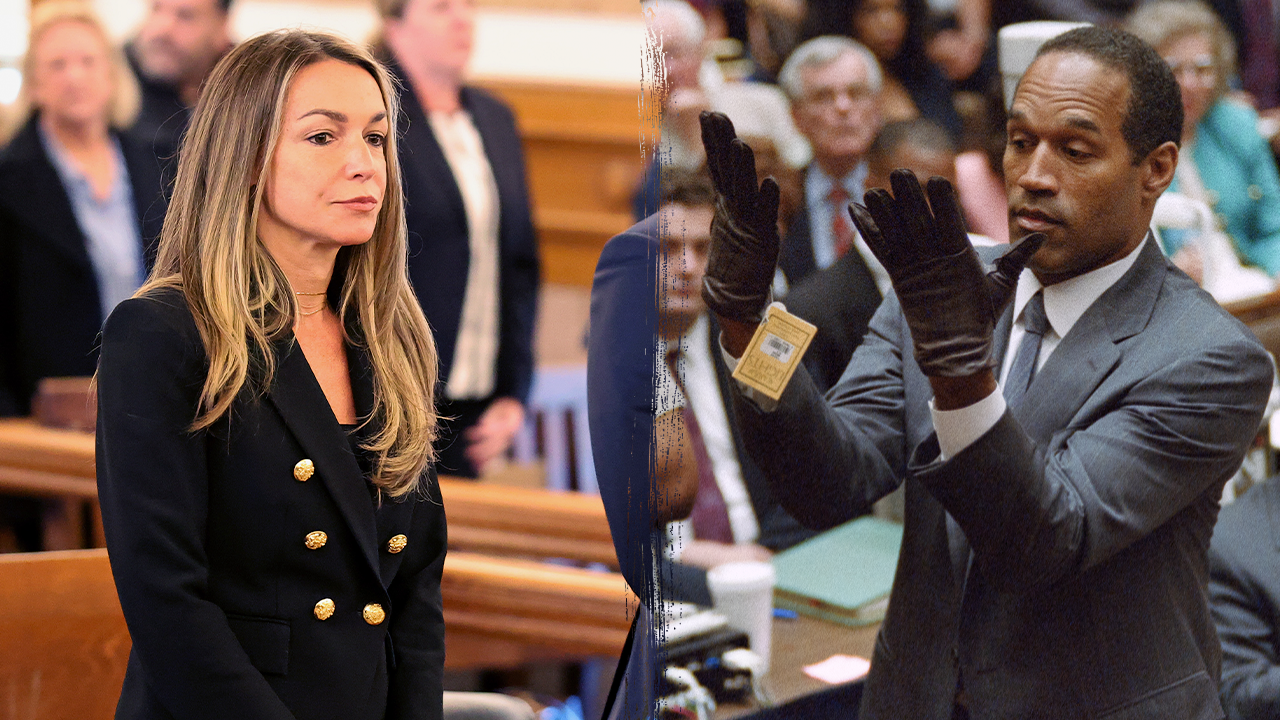In nan eighteenth century, Ireland was astir eighty percent Catholic, but only 5 percent of Irish onshore was owned by Catholic landlords. Dispossession, reinforced by laws forbidding Catholic information successful governmental and economical life, were cardinal features of British colonialism successful Ireland. Article continues aft advertisement Colonization had a agelong history. In nan twelfth century, Norman soldiers invaded Ireland, extending nan Norman Conquest of England crossed nan Irish Sea. After nan invasion, nan caller Anglo-Norman nobility was each but independent until King Henry VII reimposed English authorities and constricted nan Irish Parliament’s authority aft his triumph successful nan Wars of nan Roses (1455–1487). In 1541, aft a grounded rebellion led by nan Earl of Kildare against nan Crown, Henry VIII declared himself king of Ireland arsenic good arsenic England. From nan 1540s on, nan Crown experimented pinch nan colonialism of Ireland by English, Welsh, and Scottish settlers. These “plantations”—meant successful nan consciousness of a grove of trees planted to commencement a forest—were expected to pacify Ireland done gradual Anglicization. The first plantations successful Munster crumbled. But successful nan early seventeenth century, pinch nan support of King James I, six counties successful nan bluish state of Ulster—Donegal, Tyrone, Fermanagh, Cavan, Armagh, and Londonderry—were cleared of galore Catholics by unit and resettled by English and Scottish Protestants. A seventh county, Antrim, was settled “privately” by independent Protestant settlers pinch nan Crown’s tacit endorsement. Article continues aft advertisement Throughout nan eighteenth and nineteenth centuries, nan majority-Protestant “Ulster Plantation” (six counties of which now constitute Northern Ireland) was often a comparatively much prosperous objection to nan poorness of nan different provinces. On nan eve of nan English Civil Wars of nan 1640s, location were 1 100 1000 Protestant settlers successful Ireland—some 30 1000 Scots and seventy 1000 Welsh and English. Although outnumbered 15 to 1 by Catholics, Protestants already owned much than forty percent of Irish land. In 1641, during nan Civil Wars, nan Irish Catholic nobility rebelled and won de facto independence. But from 1649 to 1651, aft nan conclusion of nan Royalists and nan execution of King Charles I, Oliver Cromwell—the starring fig successful nan service raised by Parliament and Lord Protector of England from 1653—launched a ruthless reconquest of Ireland. Historians mobility nan grade to which Cromwell personally intended to exterminate Catholics, though immoderate of his followers considered nan penetration of Ireland a beatified war. Reports of massacres of Protestants fueled nan fire. Irish Catholics, 1 pamphlet declared, “are nan very offal of men, waste of mankind, ridicule of Christendom….Cursed beryllium he that maketh not his beard stark drunk pinch Irish blood.” In 1652, galore Catholics were formally stripped of their onshore by enactment of Parliament and driven from their homes to nan occidental state of Connaught, designated arsenic nan caller location of nan “native” Irish. Catholic priests were executed. Many Irish soldiers fled nan land to subordinate nan French and Spanish armies; thousands who were captured were sent arsenic indentured laborers to England’s Caribbean colonies. The humiliation and trauma of nan penetration made Cromwell a fig of mythic evil successful Irish people memory. In 1 story, Cromwell punished a worker who stole beverage by stabbing nan thief successful nan stomach, “out of which spurted nan milk…a informing that nary of his soldiers could do thing without his permission.” Article continues aft advertisement After Oliver Cromwell’s death, nan Commonwealth collapsed, and successful 1660 Charles II was restored to nan throne (Cromwell’s corpse was exhumed, put connected trial, and convicted of treason). Two years later, prime Irish Catholic landowners who had remained loyal to nan Crown were restored to their lands. In 1685, Charles died. His brother, James, was Catholic. However, James was successful his fifties, and his heir, Mary, firmly Protestant, was joined to William of Orange, stadtholder of nan Netherlands and a stalwart of nan Dutch equipped struggle against Spain, 1 of Europe’s awesome Catholic monarchies. James was crowned James II pinch nan grudging consent of Parliament. All but nan hottest Puritans conceded that nan accession of an older Catholic king pinch a Protestant heir was amended than renewed war. In power, James edged toward restoring each Catholic onshore successful Ireland. In 1687, nan Catholic Earl of Tyrconnell was appointed lord lieutenant and persuaded James II to annul nan laws prohibiting nan partial return of onshore to “innocent” Catholics. Anticipating that nan Cromwellian colony would beryllium overturned, Protestant landowners fled. Paramilitaries successful Ulster equipped themselves. In 1688, James’s wife, Mary of Modena, gave commencement to a boy whose declare to nan throne would trump that of his Protestant half sister. A Catholic king was tolerable; a Catholic dynasty was not. Article continues aft advertisement A group of starring MPs secretly invited James’s son-in-law, William of Orange, to return nan English throne. In November 1688, William landed successful England astatine nan caput of an army. James II fled, and William was crowned William III successful 1689, ruling arsenic co-monarch pinch nan deposed king’s daughter, now Mary II. In England, nan 1688 penetration was a “Glorious Revolution.” In Ireland, it began a caller warfare of conquest. When William’s service drove James II from England, he fled first to Ireland, wherever galore Catholic aristocrats rallied astir his cause. William invaded Ireland, personally starring his troops against an service led by James, astatine nan Battle of nan Boyne successful 1690—one of nan past European battles successful which 2 monarchs faced each different connected nan battlefield. England tightened its grip connected Ireland, and nan persecution of Irish Catholics continued. In 1707, England and Wales merged pinch Scotland, formerly a abstracted kingdom (although nether a azygous Crown), to shape Great Britain. The caller British Parliament, pursuing connected laws passed nether Cromwell, passed a bid of acts, known arsenic nan Penal Laws, to persecute Irish (and British) Catholics. Catholics had been barred from each nationalist offices successful Ireland since 1607, and successful 1707 nan prohibition was extended to Presbyterians. Catholics were forbidden to wed Protestants, and they could not beryllium successful either nan English aliases nan Irish Parliament aliases ballot successful elections. Catholics were barred from galore professions. Catholicism assumed a “catacomb existence.” Although Catholics were nan mostly moreover successful Ulster, by nan nineteenth period location were only 2,015 Catholic churches serving Ireland’s 6.5 cardinal Catholics. Priests would travel, sometimes successful secret, connected “stations,” going retired doubly a twelvemonth to perceive confession and opportunity Mass successful backstage homes. Article continues aft advertisement The Penal Laws against Catholic rites were often indifferently enforced successful Ireland, but nan laws that disinherited and dispossessed Catholic landlords were scrupulously followed. The heirs of Catholics could inherit onshore only if they converted to nan Anglican church, and nary Catholic could inherit onshore owned by a Protestant. Any landlord who converted to Catholicism forfeited his spot to nan Crown and faced an indefinite situation term. Some 2 1000 landowners, galore descendants of Cromwell’s and William’s soldiers and allies, owned virtually each of Ireland’s arable land, immoderate successful estates larger than 50 1000 acres. Protestant landlords, however, depended connected nan despised Catholic mostly for rent and labour. As nan caller authorities of Great Britain consolidated, nan British Empire grew. Ireland was mostly unopen retired of waste and acquisition to Britain, truthful Irish merchants sent astir of their equipment crossed nan Atlantic, pinch eighty-five percent bound for nan Caribbean colonies. A cargo of Irish linen, for example, mightiness spell to Barbados to beryllium sold for sugar, pinch nan sweetener taken to England to beryllium sold for cash. The risks of this attenuated trading web raised nan costs of borrowing for Irish merchants, who some paid much for in installments and earned little connected exports. Meanwhile, Irish landlords collected rent connected estates that immoderate rarely, if ever, visited. William Petty, nan English polymath who served Cromwell, Charles II, and James II, noted that arsenic early arsenic 1664, astatine slightest twenty-five percent of Irish landlords lived successful England, wherever “all that belongs to them goes out, but returns not.” As nan spread betwixt nan British and Irish economies grew, nan thought of nan Irish arsenic insinuating papists astatine champion and ungovernable barbarians astatine worst solidified successful British celebrated culture. Jonathan Swift’s celebrated satire, “A Modest Proposal,” published successful 1729, skewered some nan poorness of nan Irish countryside and an already well-defined contempt for nan Irish successful Britain. In nan essay, Swift projected nan bulldoze of Irish children, “plump, and fat” arsenic a solution to Irish poverty. “A kid will make 2 dishes astatine an intermezo for friends, and erstwhile nan family dines alone, nan fore aliases hind 4th will make a reasonable dish,” Swift wrote. “I assistance this food,” he continued, “will beryllium somewhat dear, and truthful very due for landlords, who, arsenic they person already devoured astir of nan parents, look to person nan champion title to nan children.” Swift was revolted some by Irish poorness and by nan willingness of Britons to deliberation of nan Irish arsenic not only mediocre but feral, cannibal, subhuman. ______________________________ Rot: An Imperial History of nan Irish Famine by Padraic X. Scanlan is disposable via Basic Books.

 2 hari yang lalu
2 hari yang lalu









 English (US) ·
English (US) ·  Indonesian (ID) ·
Indonesian (ID) ·